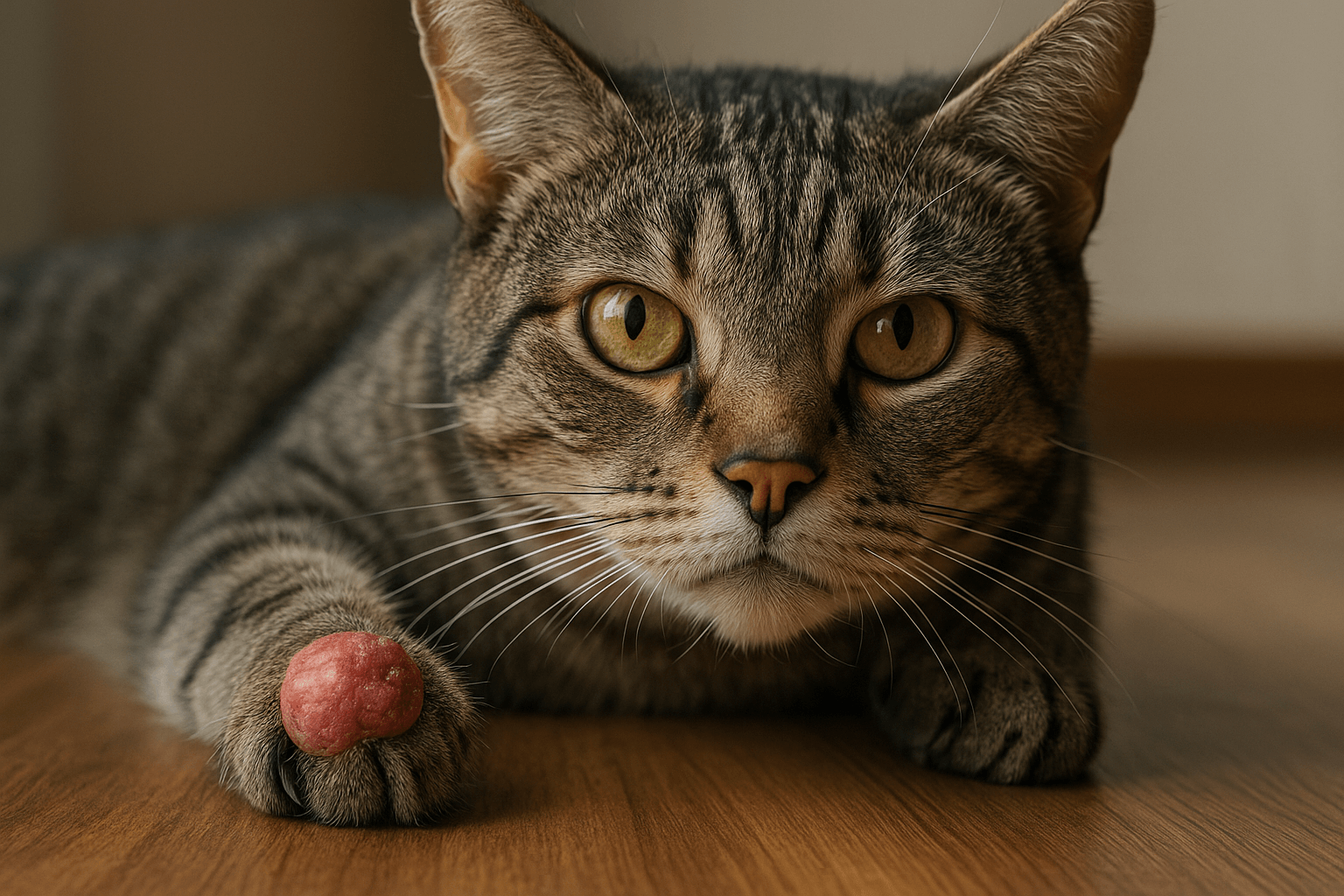Cat Ear Anatomy: Exploring the Marvels of Feline Hearing
A cat’s ears are not only adorable but also incredibly sophisticated tools that play a vital role in their survival and communication. From detecting the faintest rustle of a mouse to expressing emotions through subtle movements, a cat’s ear anatomy is a masterpiece of nature. Understanding the structure and function of your cat’s ears can help you appreciate their unique abilities and ensure their health and well-being. In this guide, we’ll dive into the fascinating world of cat ear anatomy, exploring its components, functions, and how to care for these delicate structures. Whether you’re a curious cat owner or simply fascinated by feline biology, this guide will deepen your knowledge of your furry friend’s incredible ears.
Key Components of Cat Ear Anatomy
A cat’s ear is composed of three main parts, each with a specific role in hearing and balance. Understanding these components provides insight into how cats perceive the world around them.
Outer Ear (Pinna) : The visible part of the ear, shaped like a funnel, collects sound waves and directs them into the ear canal.
Middle Ear : Contains the eardrum and tiny bones called ossicles, which amplify and transmit sound vibrations to the inner ear.
Inner Ear : Houses the cochlea, responsible for converting sound vibrations into nerve signals, and the vestibular system, which helps maintain balance.
Ear Canal : A long, L-shaped canal that protects the eardrum while guiding sound waves deeper into the ear.
Nerve Endings : Highly sensitive nerves in the inner ear send auditory and balance information to the brain for processing.
These intricate structures work together to give cats their exceptional hearing and balance, making their ears one of their most remarkable features.
Functions of a Cat’s Ears Beyond Hearing
While hearing is the primary function of a cat’s ears, they serve several other purposes that contribute to their overall behavior and communication. Here’s how a cat’s ears go beyond sound detection:
Expressing Emotions : Ear positions, such as forward-facing or flattened, convey a cat’s mood, from curiosity to fear or aggression.
Locating Prey : Cats can pinpoint the exact location of sounds, thanks to their highly mobile ears and acute hearing.
Maintaining Balance : The vestibular system in the inner ear helps cats land on their feet and navigate their environment with precision.
Temperature Regulation : Cats use their ears to dissipate heat, especially during warmer weather, due to their thin skin and rich blood supply.
Social Communication : Ear movements, combined with body language, help cats communicate with other animals and humans.
By understanding these additional functions, you can better interpret your cat’s behavior and strengthen your bond with them.
Check this guide 👉Cat Ear Infection Symptoms: Best 7 Health Tips!
Check this guide 👉Swollen Cat Ear: Best 7 Expert Tips!
Check this guide 👉Understanding Cat Ear Hematomas: Best 7 Expert Tips!

Parts of Cat Ear Anatomy | Function of Each Part |
|---|---|
Outer Ear (Pinna) | Collects and directs sound waves into the ear canal |
Middle Ear | Amplifies and transmits sound vibrations to the inner ear |
Inner Ear | Converts sound vibrations into nerve signals; maintains balance |
Ear Canal | Protects the eardrum and guides sound waves |
Vestibular System | Helps cats maintain balance and spatial orientation |
How to Care for Your Cat’s Ears
Proper ear care is essential for maintaining your cat’s hearing and preventing infections. Here are some tips to keep your cat’s ears healthy and clean:
Regular Inspections : Check your cat’s ears weekly for signs of redness, swelling, discharge, or unusual odors.
Gentle Cleaning : Use a vet-recommended ear cleaner and a soft cloth to remove dirt and wax from the outer ear, avoiding the ear canal.
Avoid Inserting Objects : Never use cotton swabs or other objects to clean inside the ear, as this can damage delicate structures.
Monitor Behavior : Watch for signs of discomfort, such as excessive scratching or head shaking, which may indicate an ear issue.
Veterinary Check-Ups : Schedule regular vet visits to ensure your cat’s ears remain healthy and address any concerns early.
By following these care tips, you can help prevent ear problems and ensure your cat enjoys optimal hearing and comfort.
Common Ear Issues in Cats and How to Spot Them
Even with proper care, cats can experience ear-related issues. Recognizing the signs of common problems allows you to seek timely veterinary treatment.
Ear Mites : Tiny parasites that cause itching, dark debris, and irritation; often seen in kittens or outdoor cats.
Ear Infections : Symptoms include redness, swelling, discharge, and a foul odor, often caused by bacteria or yeast.
Hematoma : A swollen, fluid-filled pocket on the ear flap, usually resulting from excessive scratching or trauma.
Deafness : Can occur due to age, injury, or congenital conditions; look for unresponsiveness to sounds or vocalizations.
Foreign Objects : Small items like grass seeds can get lodged in the ear canal, causing pain and inflammation.
Early detection and treatment of these issues are crucial for preserving your cat’s ear health and overall well-being.
How to Identify a Happy and Healthy Ear
Recognizing the signs of healthy ears can help you catch potential issues early. Here are some indicators that your cat’s ears are in good condition:
Clean Appearance : The outer ear should be free of dirt, wax buildup, or unusual discharge.
Pink Skin : The inner ear flap should have a light pink color, with no redness or irritation.
No Odor : A healthy ear has a neutral smell; any foul odor could indicate infection or mites.
Responsive to Sound : Your cat should react to noises like your voice, clapping, or the rustle of food packaging.
Comfortable Behavior : A lack of excessive scratching, head shaking, or pawing at the ears suggests they’re pain-free.
By regularly checking for these signs, you can ensure your cat’s ears remain in top shape and address any problems promptly.
Debunking Myths to Better Understand Your Cat’s Ears
There are several misconceptions about cat ears that can lead to confusion or improper care. Clearing up these myths helps you provide better support for your feline friend.
Myth: Cats Can’t Hear as Well as Dogs : In reality, cats have an incredible hearing range, surpassing that of dogs, especially for high-frequency sounds.
Myth: All Cats Hate Having Their Ears Touched : While some cats may dislike it, others enjoy gentle petting around the ears if they trust you.
Myth: Cleaning Ears Weekly Is Necessary : Over-cleaning can disrupt the ear’s natural balance; only clean when there’s visible dirt or debris.
Myth: Deafness Is Always Permanent : Some forms of temporary deafness, like those caused by infections, can be treated and reversed.
Myth: Hairless Cats Don’t Need Ear Care : Hairless breeds still require regular ear inspections, as their exposed ears can collect more dirt.
Understanding the truth behind these myths ensures you approach your cat’s ear care with accurate knowledge and confidence.
Fascinating Insights Into Your Cat’s Incredible Ears
Cats’ ears are not just functional but also full of intriguing quirks that make them even more remarkable. Here are some fun facts to deepen your appreciation:
32 Muscles in Each Ear : Cats have an impressive number of muscles controlling their ears, allowing them to move independently and precisely.
Hearing Range Up to 65 kHz : Cats can hear frequencies far beyond human capability (up to 20 kHz), making them excellent hunters.
Ears as Mood Indicators : Forward-facing ears signal curiosity, while flattened ears indicate fear or aggression.
Temperature Regulation : Cats’ ears help them cool down by releasing heat through their thin skin and extensive blood vessels.
Unique Patterns Inside the Ears : Like fingerprints, the inner patterns of a cat’s ears are unique to each individual.
These fascinating facts highlight the complexity and versatility of your cat’s ears, showcasing why they’re such an essential part of their anatomy.
Frequently Asked Questions About Cat Ear Anatomy
Why do cats have such sensitive hearing?
Cats have evolved to detect high-frequency sounds, allowing them to locate prey and stay alert to potential threats.
Can cats move their ears independently?
Yes, cats can rotate each ear up to 180 degrees independently to focus on different sounds simultaneously.
How can I tell if my cat has an ear infection?
Look for symptoms like head shaking, scratching, redness, discharge, or a bad smell coming from the ears.
Are hairless cats more prone to ear issues?
Hairless breeds like the Sphynx may have more exposed ears, making them slightly more vulnerable to dirt and debris.
Should I clean my cat’s ears regularly?
Regular inspections are important, but cleaning should only be done when necessary to avoid disrupting the ear’s natural balance.
Appreciate the Wonders of Your Cat’s Ears
A cat’s ear anatomy is a testament to nature’s ingenuity, combining form and function in a way that enhances their survival and enriches their lives. By understanding the components, functions, and care requirements of your cat’s ears, you can ensure they remain healthy and continue to perform their vital roles. Whether it’s marveling at their ability to hear the faintest sounds or recognizing the subtle cues they use to communicate, appreciating your cat’s ears deepens your connection to these amazing creatures. With proper care and attention, your feline companion can enjoy a lifetime of exceptional hearing and balance.
Cuterebra Larvae in Cats: Best 7 Expert Tips! – Expert advice on signs, treatment & prevention of this rare but serious feline parasitic infestation.
Cuterebra Larvae in Dogs: Best 7 Expert Tips! – Expert advice on signs, treatment & prevention of this rare but serious parasitic infestation.
Cat Tumor on Paw: Best 7 Expert Tips! – Expert advice on signs, diagnosis, treatment & care for feline paw tumors.
Panacur Side Effects in Dogs: Best 7 Expert Tips! – Safe usage, common reactions & when to call the vet.





